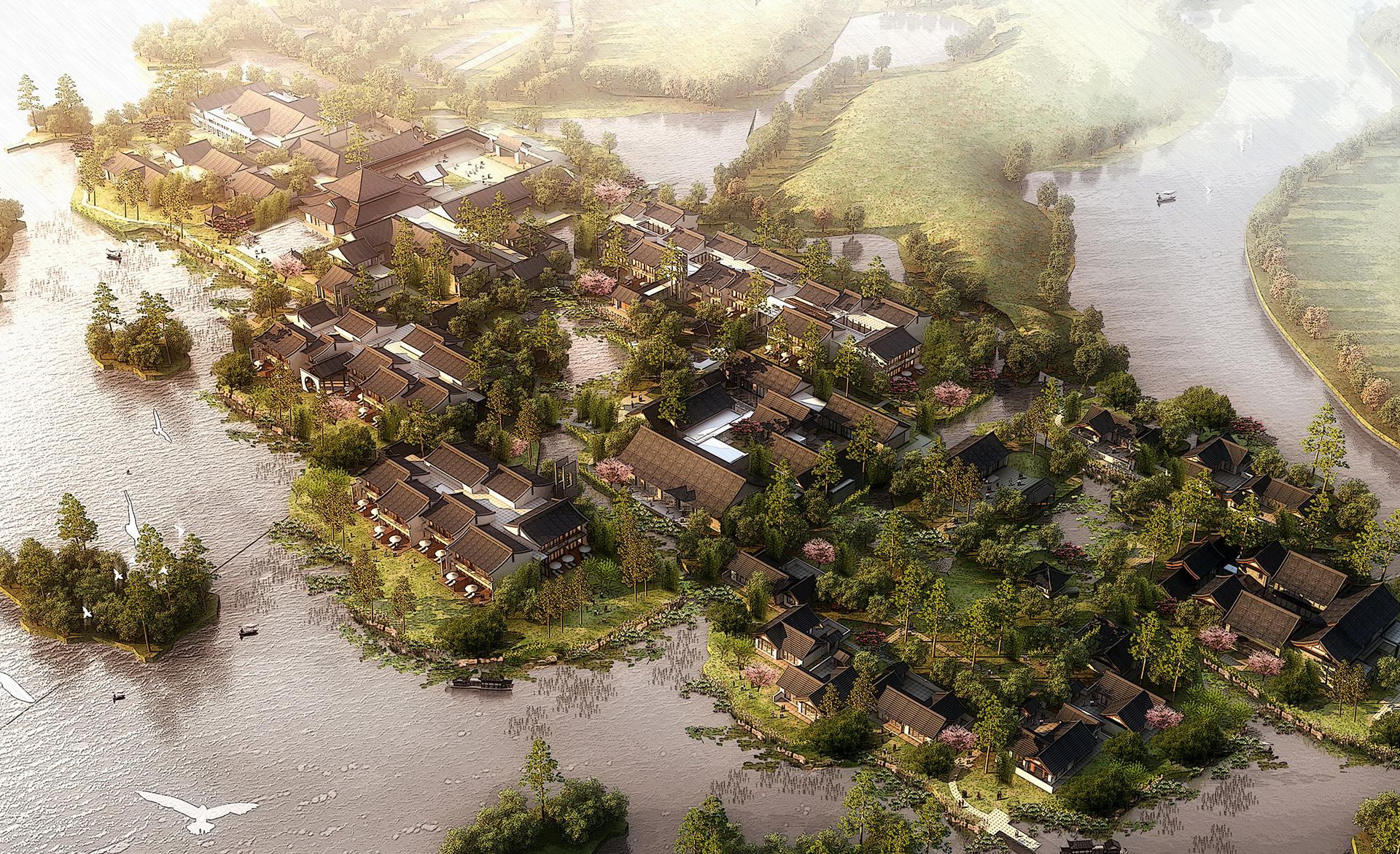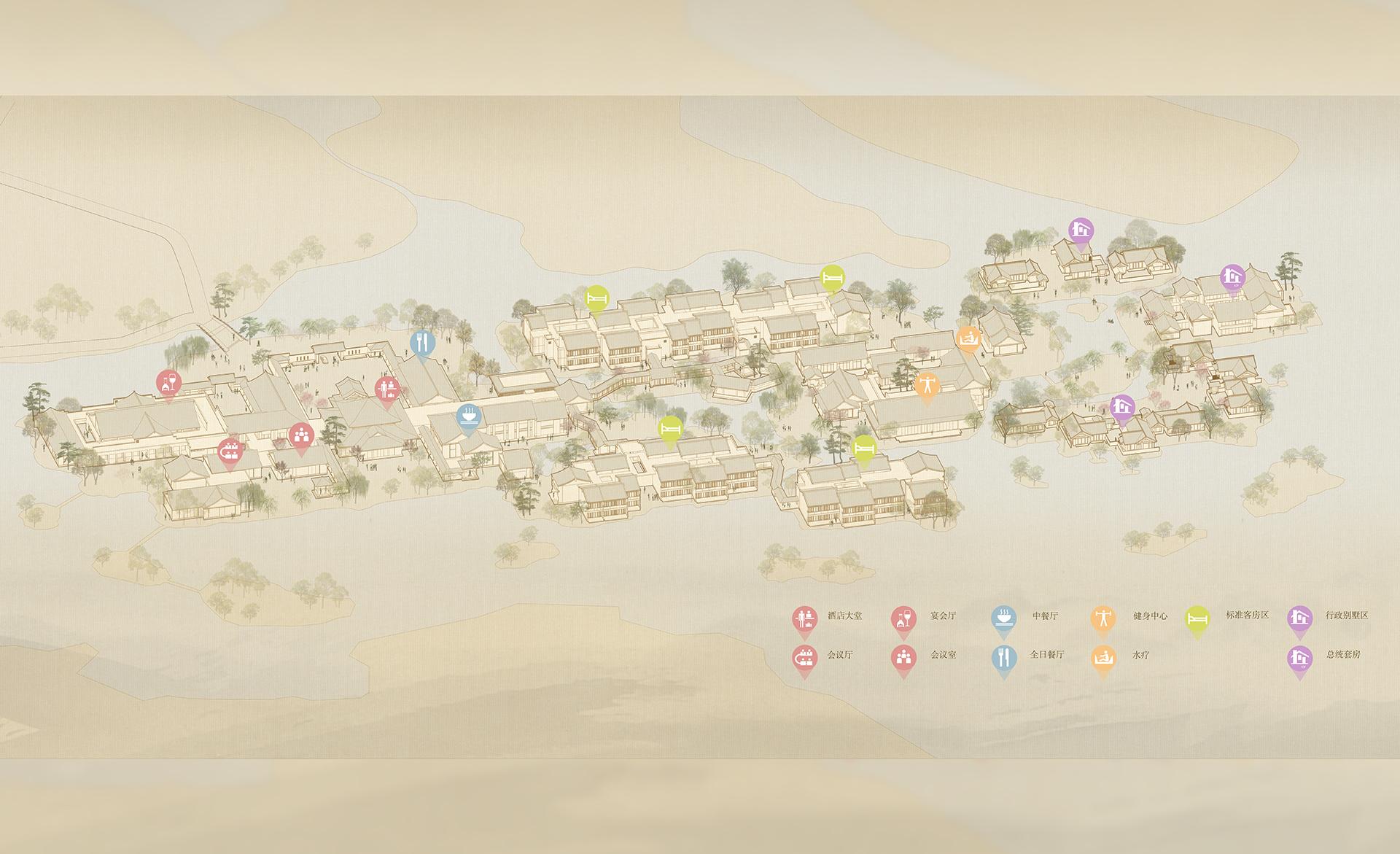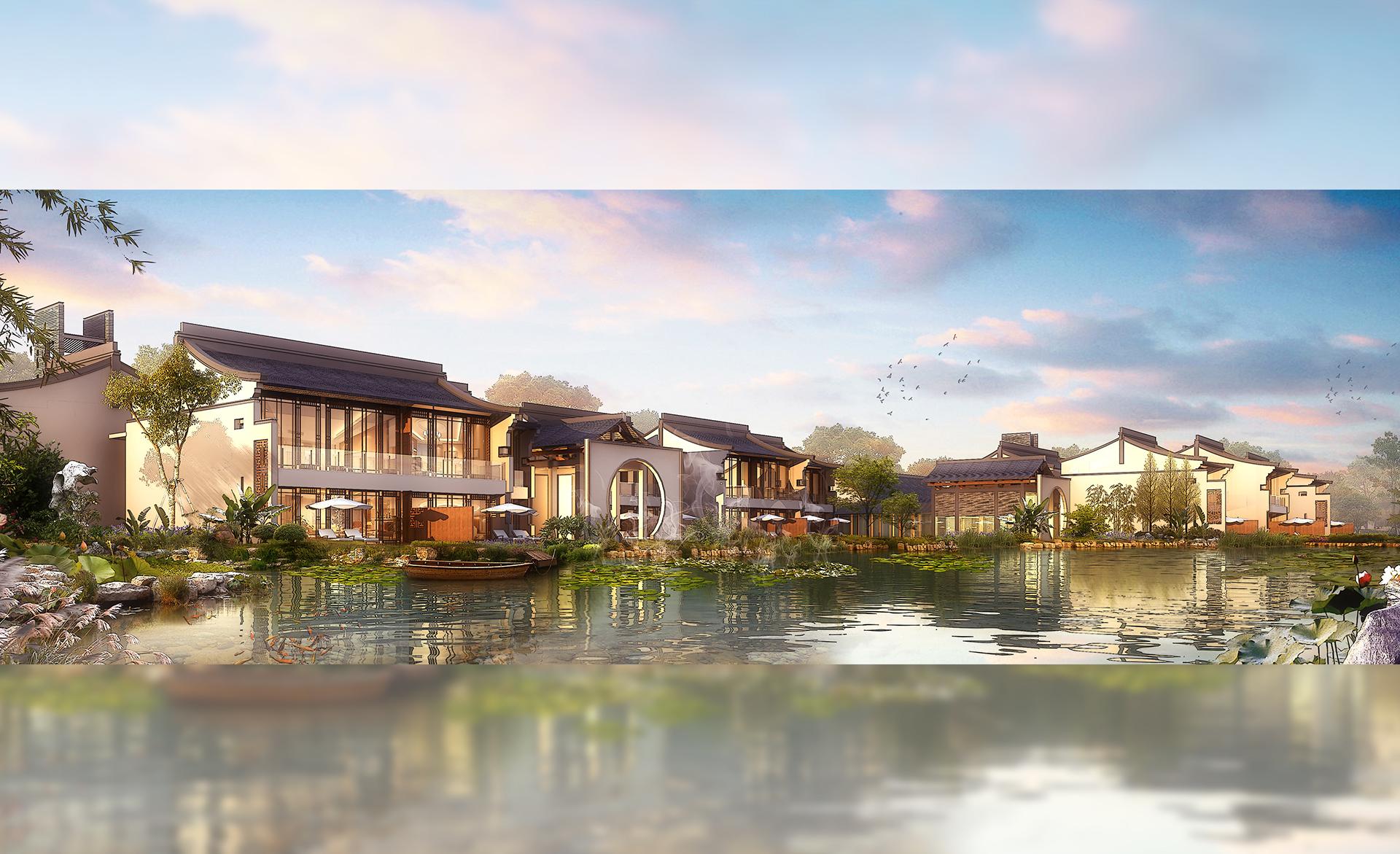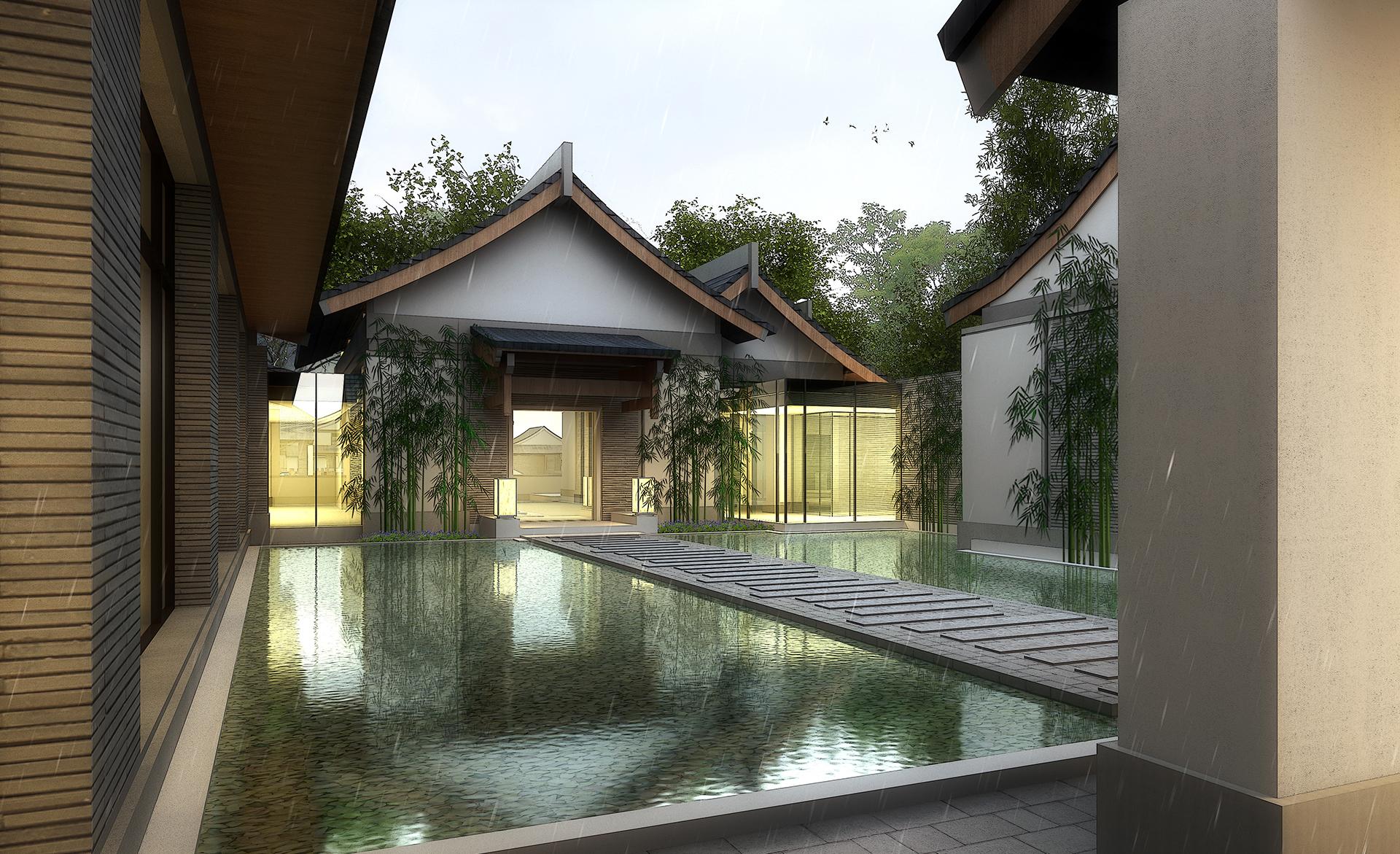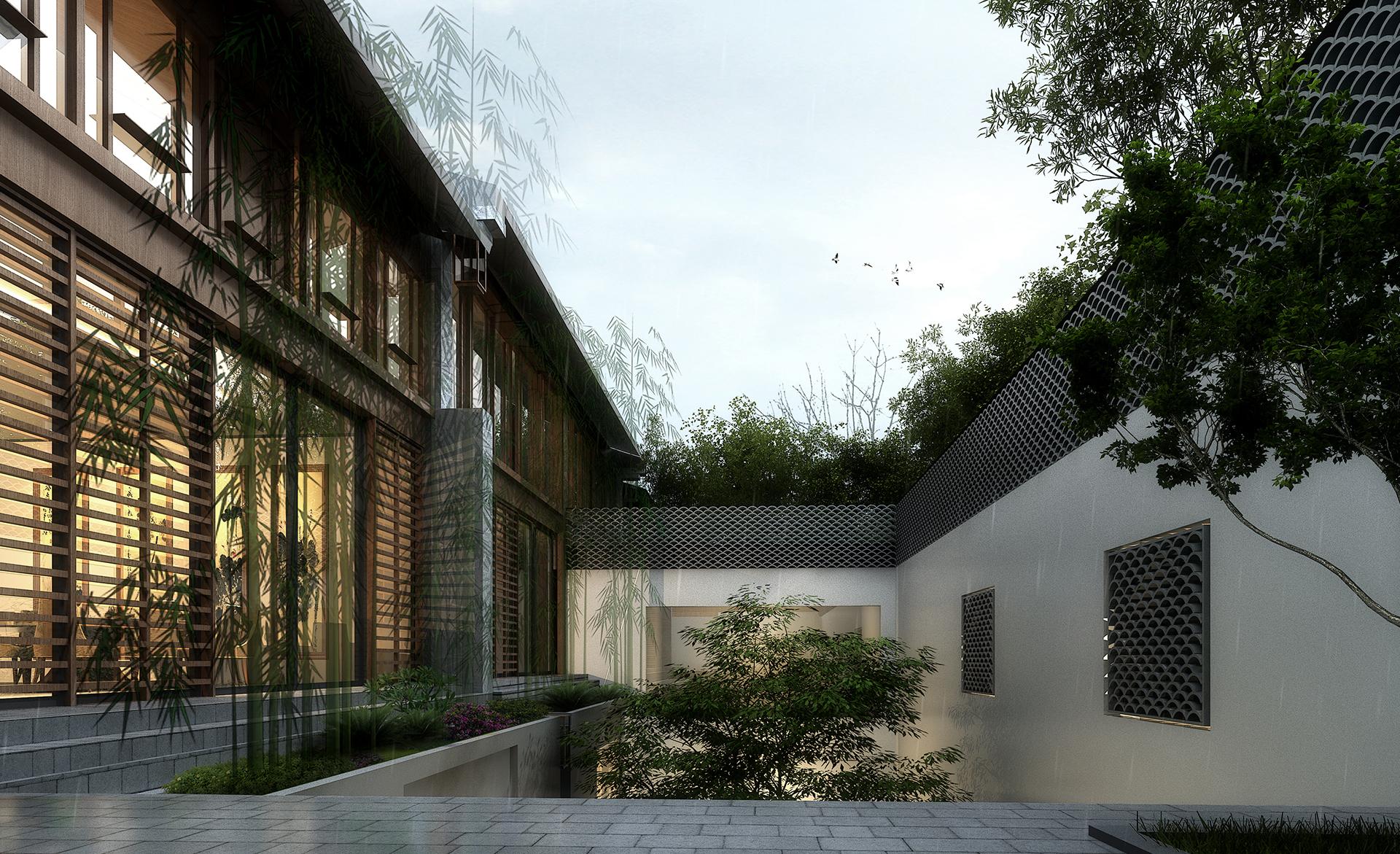Jining Beihu Boutique Hotel
Location: Shandong, China
Site Area: 3.6 ha
Building Area: 20,000 sqm
Client: Shandong Jining Xinchang Real Estate
The North Lake in Jining is characterized by its vast water surface (four times the area of West Lake in Hangzhou) and good water quality, making it a rare and high-quality natural environmental resource in northern cities. However, the existing development has been somewhat disorderly. The landscape design for this project aims to organize the surrounding mountain and water spaces, complementing the courtyard-style spatial system of the architectural complex. It aims to construct a space strategy with classical Chinese garden aesthetics for different levels of landscapes both inside and outside the hotel, achieving a perfect integration of hotel functions and garden scenery. The goal is to enhance the spatial quality and attractiveness of the boutique hotel, intending to create "the first pearl of the North Lake landscape, the leader in North Lake humanistic boutique," "the closest retreat from the city, a return to the classical landscape aesthetics of Wangchuan," and "a perfect presentation of modern lifestyle and classical gardens, a model of high-end vacation."
In the ancient art of garden creation, the emphasis was on ingenuity and borrowing from the surroundings. To create a more picturesque landscape, the design reorganizes the spatial layout of the surrounding islands by incorporating the scenery outside the garden into it. Multiple areas within the scenic area utilize the stacking of excavated soil from lake dredging to create islands, dividing the lake surface into distinct primary and secondary water spaces and reshaping the winding shoreline. The rich hierarchical mountain and water spatial structure, combined with vegetation landscapes changing with the seasons, allows hotel guests to enjoy excellent views at different scales from afar to nearby.
In alignment with the overall planning of courtyard-style spaces and the architectural style of modern Chinese, the interior landscape design of the hotel also emphasizes the creation of spaces with classical Chinese garden aesthetics. Situated at the cultural junction between the north and south, the design draws on various elements from both northern and southern garden traditions. In the entire garden area, within the multiple scale courtyards ranging from public to private spaces, it creates a landscape spatial sequence that unfolds as one moves through the different scales.
